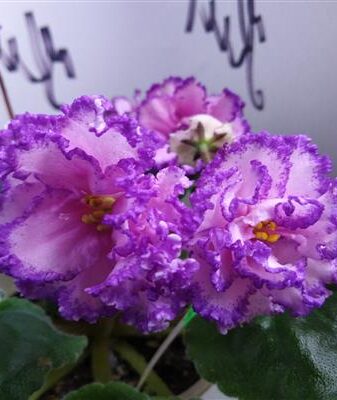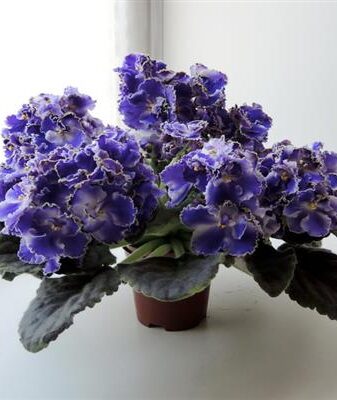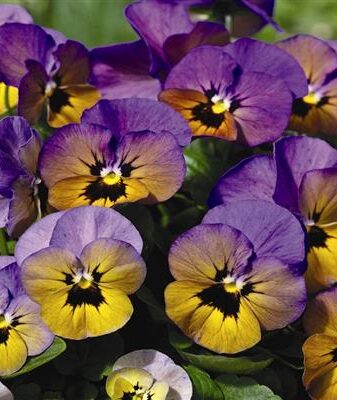Violet Diamond Tiffany
Content:
This representative of herbaceous crops - the violet Diamond Tiffany announced its existence in 2006. Time goes by, and the plant is still cultivated in apartments on the windowsills, it, in turn, brings joy to flower growers. The herb does not ask for special agrotechnical procedures, therefore, experts advise people who have no experience in floriculture to start with this herbaceous representative.
Violet Diamond Tiffany: description of the variety and characteristics
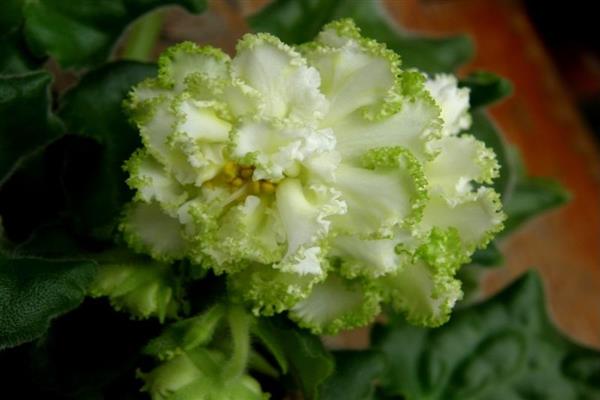
Violet Diamond Tiffany: photo of the variety
Regardless of the lack of catchy color, the Brilliant Tiffany violet variety has quite large flowers. These are yellowish and greenish stars with a double surface and a corrugated edge. In the description of the variety, it is written that the plants have a greenish or pinkish color. However, in the presence of a pinkish ruffle, we can safely say that you have become the owner of a subspecies of the variety, which is called "sport".
The outlet has light greenish leaves with a corrugated edge. It happens that the color becomes more saturated, its saturation is influenced by the conditions of the herbaceous.
Like all representatives of herbaceous crops, this plant needs a simple, but correct agricultural technique. We will carefully analyze these procedures.
Violet Diamond Tiffany: planting varieties
For planting the LE Brilliant Tiffany violet variety, it is possible to use a ready-made mixture or universal soil. Most summer residents prefer making their own land, with this option it is recommended to take soil, sand and peat in a ratio of five to one to three. Herbaceous plants are planted in small containers, the containers are replaced once every twelve months. The earth must be loosened up and a good drainage layer with a large amount of minerals must be made.
The soil should always be slightly moistened, but it is worth not wetting the foliage, because it is easily subject to rotting. A liquid at room temperature is used for humidification. The herb is fed every fourteen days with a phosphorus mixture, and it is recommended to use organic mixtures, but only in the season from June to August during the growing season.
Refined dark green foliage indicates that the herbaceous plant needs ample sunlight. With this option, it is recommended to move the plant to a windowsill or purchase a lamp with artificial light.
Violet Diamond Tiffany: care
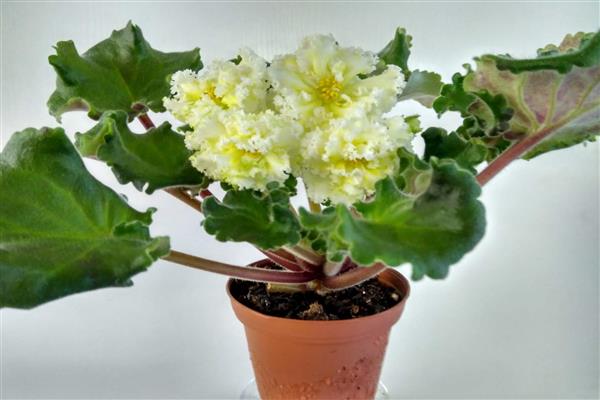
Violet LE Brilliant Tiffany: photo of the variety
- Lighting and temperature regime for this representative of herbaceous crops
The violet variety Brilliant Tiffany prefers the warm season due to the temperature indicator, which means that the plant must be cultivated in a room where the temperature indicator is from twenty to twenty-three degrees. With the arrival of the winter season, if the herbaceous plunges into a state of dormancy, it is allowed to reduce the temperature indicator to eighteen degrees.
As for lighting - although the plant prefers a sufficient amount of light, however, the lighting must be set diffused, otherwise brownish specks will sometimes form on the foliage, which indicates the presence of burns. If herbaceous is cultivated by the window, it is recommended to cover the window with a thin curtain.The windows located on the north and west sides are excellent locations for this herbaceous species. It is important to pay attention to the leaves, they should not touch the glass. It is possible to improve the conditions for keeping the herbaceous plant by installing artificial lighting, then the plant will produce the flowering process throughout the year. Active maintenance of plants requires twelve to fourteen hours of continuous illumination per day.
- The required amount of water for this representative of herbaceous crops
Violet Diamond Tiffany prefers a moderate amount of moisture, but does not tolerate drought, which means it is necessary to find a balance and make a watering schedule. The liquid must not be allowed to touch the foliage and stems, otherwise decay will form. With this option, it is recommended to walk on the grassy sponge or cloth.
Most experienced flower growers advise the wick method of moistening, when one end is placed in the soil and the other in a container of liquid. So the herbaceous receives the required amount of water, however, it is necessary to water the soil at least once every twenty-one days.
- Fertilization of this representative of herbaceous crops
Violet LE Brilliant Tiffany prefers feeding and needs them during the entire growing season, and if they are cultivated using artificial lighting, then throughout the year. Experts have developed many complexes that are available in stores ready-made. They are placed in the soil during moistening once every fourteen days.
- Breeding this representative of herbaceous crops
If there is a desire to breed herbaceous, then it is recommended to do this with the help of stepchildren, because this is the only way it is possible not to lose all the characteristics of this variety. In other ways, the dignity of the variety is lost over time. The shoots are carefully pruned and transferred into a container with liquid, pouring out the growth activator, for the emergence of a root system. After its formation, it is possible to carry out planting in the soil.
In the first twelve months of its existence, it is advised to use sphagnum moss soil for the plant, because it is light and holds water well. Then the variety of violets LE Brilliant Tiffany is transplanted into a larger pot with compacted soil, the content of loam is permissible.
Diseases and pests
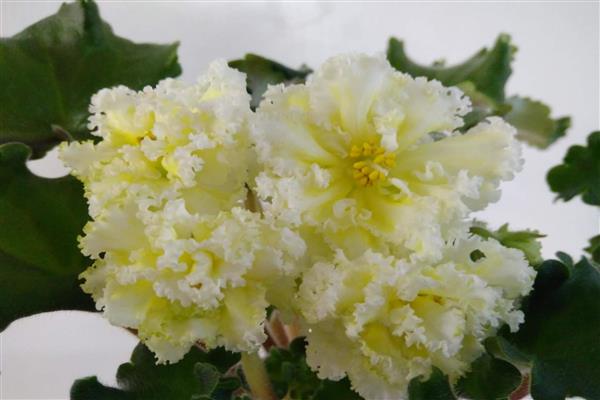
Violet Diamond Tiffany: photo of the variety
Quite often, a florist has to see cyclamen mites. It is almost impossible to completely lime them, which means it is worth following the advice, namely, throwing away the affected herbaceous. In addition, the plant is exposed to powdery mildew, various forms of decay and late blight.
From most of the diseases, the plant dies if they are not helped at the right time. The same applies to parasites that prefer to feed on the juice of this representative of herbaceous crops. If you follow the norms of agricultural technology in its entirety, then it is possible to protect the herbaceous plant from aphids, ticks and other diseases of the fungus, which are often found in violets.
Parasites do not stay on the grassy one for a long time, if the violet is treated with a simple solution made of soap and water, however, it is also possible to use alcohol and vodka.
You just need to walk with a cotton pad over the leaves and stem to fix the problem. A decoction of onion peels works wonderfully, use a spray bottle to spray.
As for root rot, then they get rid of it along with the affected parts of the roots, replace the entire soil, and then carefully monitor the required level of moisture.
Infection of bacteria in the variety of violets Brilliant Tiffany is quite difficult to cure, it is recommended to carry out prevention, namely to regulate lighting, moisture in the soil, and temperature. Fungal diseases, such as powdery mildew or downy mildew, can be removed with fungicides.


